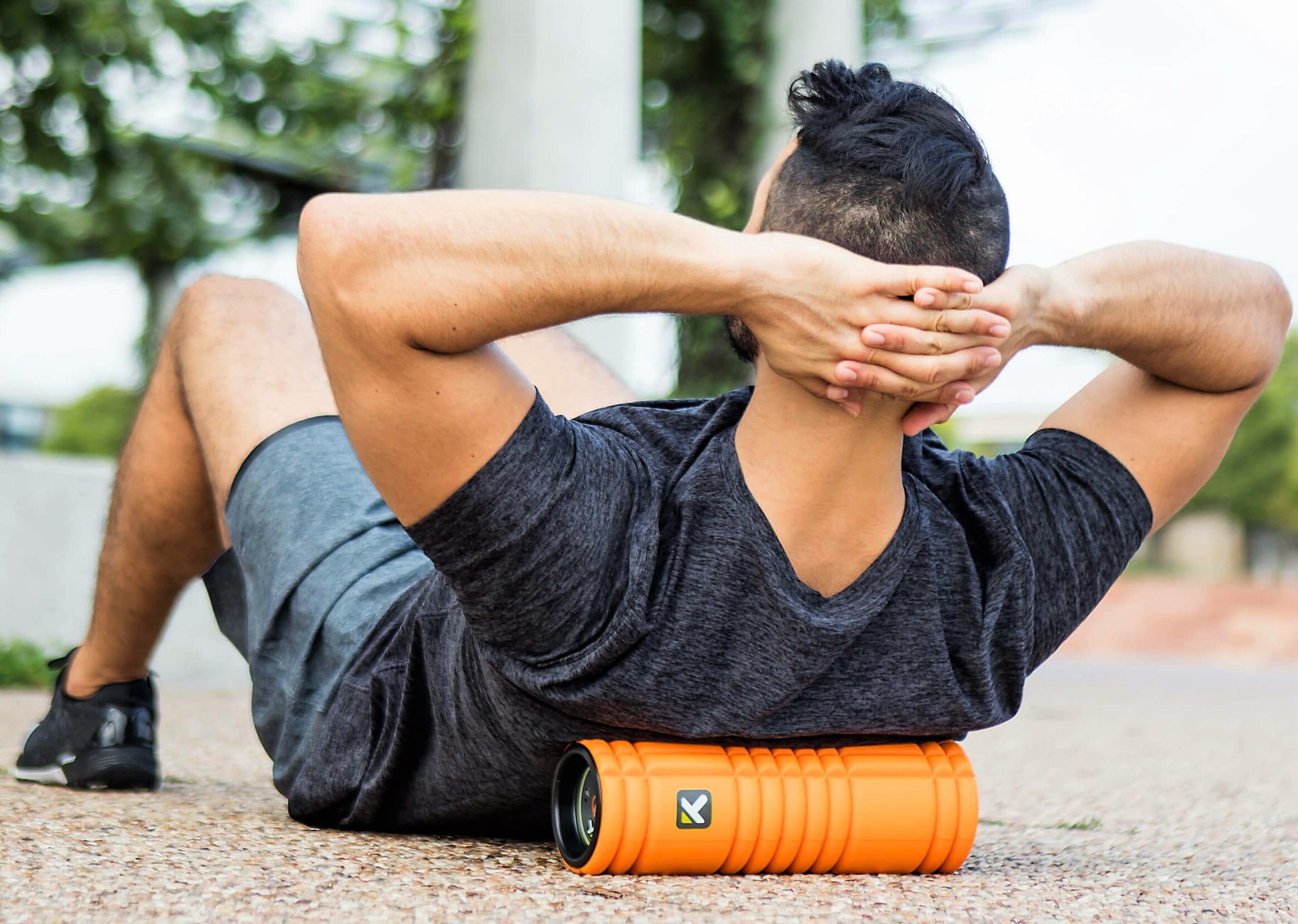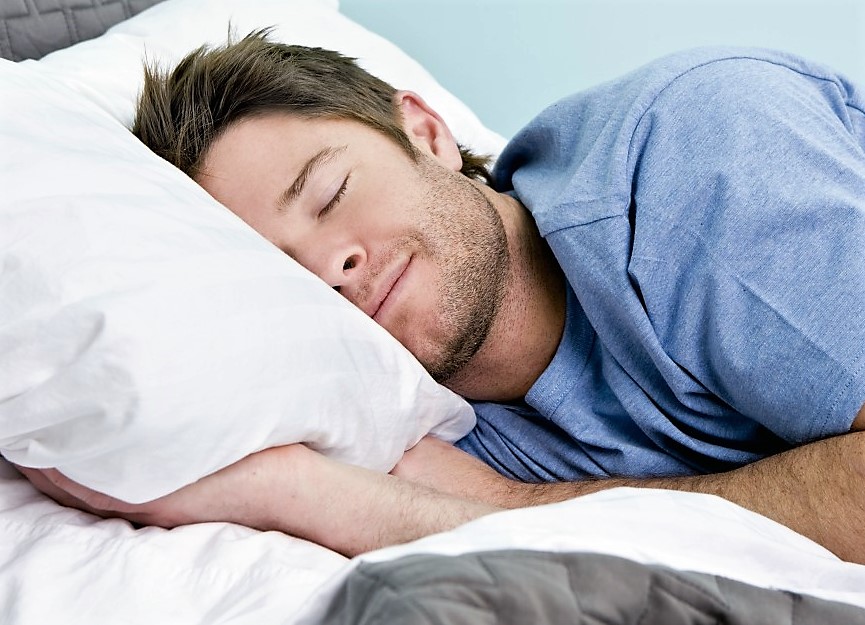The foam roller is either the subject of great ridicule or reverence. Some people say it’s absolutely the best thing since sliced bread, and others put it up there with kipping pullups and three-hour warmups.
I’ll be the first to admit that I’ve flip-flopped on foam rollers quite a bit. Unsure of where they fit in my view of what’s right and what’s ridiculous in the fitness world, I’ve decided that I should really just give them a try.
That being said, I’m also the kind of person who would really rather know something for sure than to rely on their own experiences, so I decided to do somfe digging into whether foam rollers only take advantage of the placebo effect when it comes to soreness and ROM, or whether they are genuinely helpful tools for stiff and tight powerlifters looking for a bit of an edge when it comes to lifting heavy.
The point of this article is to lay bare what’s already been mentioned in several different studies specific to foam rolling and its efficacy in an athletic and strength sport context. It’s also to share tips on how I use a foam roller specifically to improve my range of motion in the back squat and front squat, and how I combat soreness – especially when taking on several heavy squat sessions in a week.
What a Foam Roller Does
We’ve all seen foam rollers, in theory. They’re part of a greater arsenal of exercise tools touted as self-myofascial release objects. These include lacrosse balls or baseballs, kettlebell handles, the ubiquitous foam tubes, and other similar soft-yet-hard exercise tools meant to help you get loose and ready to train.
There is a particular amount to controversy on whether what foam rolling does actually counts as myofascial release. It’s important to note that there may be a significant difference between what counts as foam rolling and what myofascial release actually is.
What is Myofascial Release
Myofascial release is described as the release or breakdown of fibrous fascial tissue between the skin and muscles, and between muscles. Fascia, or connective tissue, is a system of tissue present throughout the whole body primarily between organs, muscles, bones, and skin. It’s made of collagen and it is incredibly tough, with as much tensile strength as steel. Fascia is meant to give our body structural integrity as well as aiding in the absorption and transfer of force.
However, like any other tissue in the body, fascia is prone to being injured and subsequently healing in a somewhat malformed way. When fascia scars, it turns hard and fibrous. In certain conditions, this can cause restrictive range of motion, soft tissue pain, and other problems with movement and more.
To actually cause myofascial release, we must mobilize the two layers between which the fascial tissue is located, thus tearing the fibrous scar tissue apart – releasing it. This can reduce soft tissue pain and help people regain range of motion. The only way to do so under the skin is by using your hands to knead the skin and muscle, causing muscle fibers in an area with fibrous fascia to slide past each other enough to cause the fascia to break apart.
What Foam Rollers Can Do
This can’t be done with foam rolling or soft tissue implements, and it can only be achieved to a degree through myofascial massage.
Foam rolling does something else. It doesn’t address the fibrous fascial tissue that can develop through years of trauma, but it has still been proven to be effective in:
- Improving range of motion
- Reducing the effects of muscle soreness
- Reducing electromechanically delay (causing muscles to fire more quickly)
- Improving jump height
- Increasing muscle tenderness
I personally use a plastic massage stick, hard foam roller, a baseball, a steel pipe, and the metal edge of a squat rack. Areas I regularly and slowly massage include:
- Calves (steel pipe)
- Quads (massage stick)
- Anterior delts and pectoral muscles (rack or barbell)
- Glute complex and IT band (foam roller)
- Foot sole (baseball)
To gain the maximum benefits of massaging or foam rolling, you have to learn how to do it.
Go With the Flow
First, go in the direction of the fiber. That means rolling with the fiber, not against it. For example – on your quads, it would mean rolling in the direction of your muscle, up and down. On the anterior delt, it would be the same thing, from the top of the shoulder down to the separation where you meet the bicep. For the pecs, it would be from one side of the pec to the other: from the sternum to the shoulder. And so on and so forth.
Secondly, foam rolling is all about finding a hotspot and staying on it. I don’t just roll over the muscle – I apply pressure with the implement and gently roll or knead over it until I hit a spot that hurts considerably. Then I stay there, breathing into the pain, like a deep stretch. Stay for a few seconds, then gently move up and down, like you’re digging just a little deeper. Then, go through with the full kneading for a few times, take a few seconds break, and go again. Each subsequent visit to your hotspot should feel a little less painful and a little easier. After three of four bouts of massaging, move on to the next muscle.
The Foam Roller and ROM
Foam rolling has been found to “substantially” improve range of motion after an intense bout of physical activity. When tested versus a control group, it was found that using a foam roller on muscles around the leg increased squat range of motion, drastically decreased soreness after training, and improved muscular activation and vertical jump. Another study showed significant change in hip-flexion ROM through foam rolling. To be more specific, only foam rolling was better than doing nothing, but not quite as effective as static stretching, while doing both (static stretching and foam rolling) produced the best results.
The Foam Roller and Recovery
While range of motion is one aspect that foam rolling improves (making the foam roller an effective warmup tool), it’s also useful as a post-workout exercise tool as a way to decrease soreness and improve muscle tenderness. Muscle tenderness specifically refers to a feeling of pain when pressure is applied to the muscle. In this study, active males were tasked with a program of 10 sets of 10 reps of back squats at 60% 1RM, followed by 20 minutes of foam rolling after the workout, a day after the workout, and two days after the workout.
 The study showed that foam rolling for 20 minutes right after and a few days after squatting reduces DOMS or delayed-onset muscle soreness. DOMS is thought to be a mechanism created by the body to forcibly take a break after rigorous activity to avoid injury. Why foam rolling reduces DOMS is unknown. DOMS can be reduced by “active recovery” as well, which involves dynamic stretching and light exercise after a rigorous training session, like going for a short jog or long walk a day after heavy squats and deadlifts.
The study showed that foam rolling for 20 minutes right after and a few days after squatting reduces DOMS or delayed-onset muscle soreness. DOMS is thought to be a mechanism created by the body to forcibly take a break after rigorous activity to avoid injury. Why foam rolling reduces DOMS is unknown. DOMS can be reduced by “active recovery” as well, which involves dynamic stretching and light exercise after a rigorous training session, like going for a short jog or long walk a day after heavy squats and deadlifts.
Foam Rolling vs. Getting a Massage
The reality is that nothing beats a professional treatment from someone who genuinely knows their shit. I won’t even bother arguing that using a foam roller equates to professional myofascial release and sports massages. As long as you don’t visit a quack or expect professional results from a cheap massage parlor, you’d be better off getting a massage from a healthcare professional with experience and passion in the area of sports medicine, versus using a foam roller or similar massage implement to gain a temporary benefit in ROM and soreness.
The Takeaway
Nothing on the planet is as effective at treating an athlete’s soreness as the hands of a trained professional with experience in sports medicine and a talent for exploring the musculature of athletes for weak points and sore spots.
And there are also few things that are quite as expensive as getting fully examined by a qualified sports medicine professional. I personally can’t afford to go to a professional once a week, especially without any verification that they’re specifically qualified to treat strength athletes. Rather than getting an oily rubdown with few therapeutic benefits for a couple bucks, I’ll just use self-massage tools to get the same effect for free.
Ideally, you should get a professional to help you with range of motion issues and address soreness, as well as aid in the recovery process. But if that isn’t an option, then using a foam roller, pipe, ball, and other similar implements can go a long way and essentially get you at least a degree of the same benefits for much less money and time.




